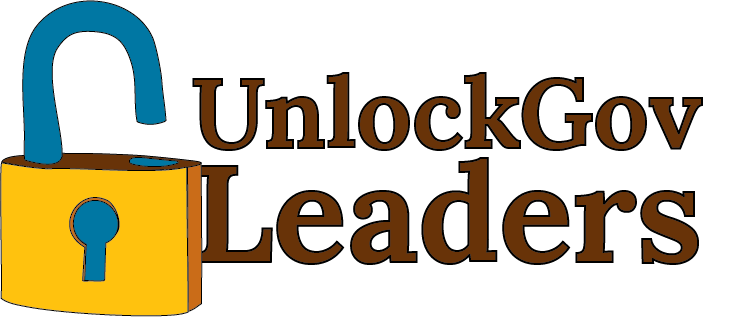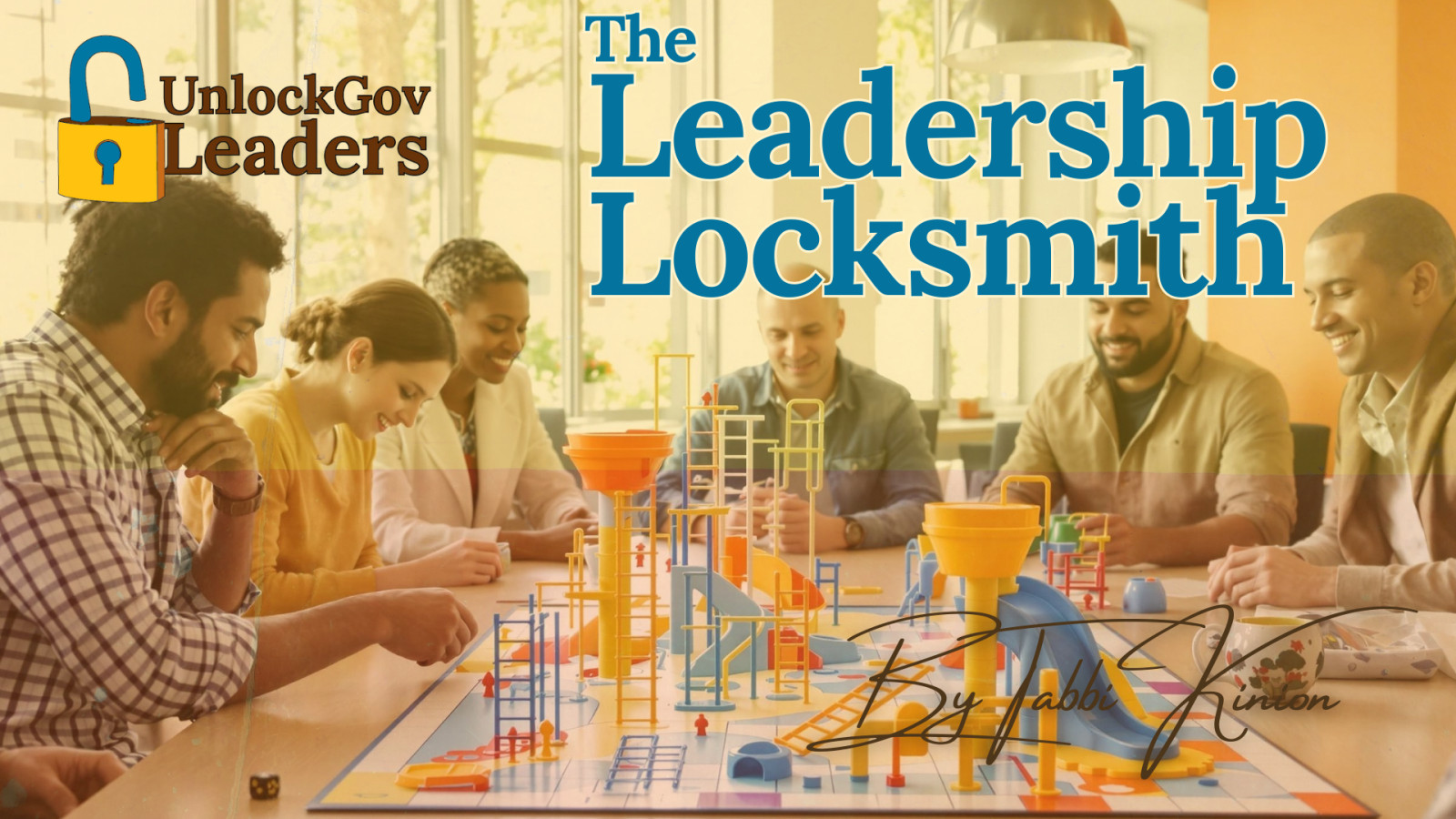
Do you remember Chutes and Ladders?
The other day, I was reminiscing about playing with my niece and nephew (who are now somehow teenagers - time flies!). That simple board game teaches us something profound about life: just when you think you've made it, one roll can send you sliding back to square one.
Or - surprise! - you might leap forward when you least expect it.
This brings us to this week's unlock code: GOAL SETTING
In my 20+ years of government leadership, I've played the goal-setting game two different ways. I call them the Architect and the Mountain Climber methods. (Stick with me here - I promise this will resonate!)
The Architect in me LOVES detailed blueprints. I'm talking color-coded spreadsheets with multiple tabs, daily task breakdowns, and milestone dates that would make any project manager swoon. (Come on, I know some of you are nodding along right now!)
Then there's my inner Mountain Climber who simply focuses on the next handhold. See the peak, spot a few key waypoints, check your gear, and start climbing - adjusting the route as new paths reveal themselves.
Here's the thing: I ping-ponged between these approaches for years, and both got results. But hindsight (don't you love that crystal-clear rearview mirror?) shows something fascinating.
Going Full Architect
When I went full Architect, I spent more hours perfecting my color-coded masterpieces than actually climbing. The spreadsheets were gorgeous, sure, but they became more like art projects than action plans. I was so busy updating timelines and adjusting Gantt charts that I barely moved forward.
Climbing Mountains
The Mountain Climber approach - simply focusing on that next achievable step - not only got me to the summit faster but also brought unexpected bonuses.
Without my rigid plans blocking the view, team members felt comfortable suggesting creative shortcuts and scenic routes I'd never considered. Their fresh perspectives often led to better solutions than my perfectly planned path ever could.
Plus, when we hit inevitable obstacles, we didn't waste time mourning our derailed plans. We just found another handhold and kept climbing. Less stress, more progress, and - plot twist - even better results.
Now, let me be clear - especially in the public sector, where we're playing with taxpayer money and ambitious community goals, you need your essential waypoints. Every successful climber needs proper gear and solid preparation.
But looking back, I wish I'd spent less time polishing those beautiful project plans and more time simply asking: What's the next step that moves us closer to our goal?
Are you ready to play?
Here's your 2025 goal-setting game strategy:
- Set clear, meaningful goals (personal or professional) - and write them down!
- Remember: Your worth as a person isn't tied to achieving goals
- Release the emotional attachment to the "how" - the how will show up (it always does)
- Don't overplan - this is a game where you have set the finish line and already know the rules
- Notice when the first step reveals itself
- Play the game - celebrate the ladders, learn from the chutes
Each goal is a new level to unlock, each challenge a puzzle to solve. Just like in any good game, you don't need the whole strategy guide before you hit "start" - you just need a direction and readiness for your next move.
Some days, you'll hit a ladder and soar. Other days, you'll slide down a chute. That's not failing - that's just playing the game! And between you and me? Those slides often teach us more than the climbs. 😉
What’s on my game board for 2025?
I'm unlocking new levels in helping government managers break free from leadership lockdown. Think of me as your friendly neighborhood Leadership Locksmith, creating keys to unlock the doors holding you back from your full potential.
The first lock I'm going to pick? I'm unveiling The 7 Most Common Leadership Mistakes that Destroy Confidence as a Public Sector Manager (And How You Can Easily Avoid Them). Consider it your master key to unlocking your leadership confidence.
What leadership level are you ready to unlock first? (No boss battles required! 🎮)
Keep rolling those dice, fellow players. Like any great game, leadership is meant to be played, not perfectly planned!

Picture this: It's 10 PM, and you're perched on your bed with your work laptop, crafting "just one more email." Sound familiar?
I've been there – doing the sleep-vs-early-morning mental hour calculation gymnastics, believing that "just a few hours on Saturday" would finally help me catch up.
Spoiler alert: It never did.
Here's the truth about burning the midnight oil: Back in 2014, Stanford economist John Pencavel's study, The Productivity of Working Hours*, proved what we secretly suspected – our productivity plummets after we work 50 hours per week. Those extra late-night email sessions? They're making you less effective! The sweet spot? 40-50 hours max for peak performance.
If we've known this for a decade, why keep pushing ourselves?
It's our brains. We do this to ourselves because we haven't worked on changing the belief system that tells us we are the exception to the rule - that we are the human being who gets more productive when working too many hours. But if you add up the weekend, late night, or early morning hours and regularly cross the 200-hours-per-month threshold (the number that, if it showed up too many months in a row, would make my boss sit me down in her office and ask questions), you are likely falling prey to some of these common logical fallacies that used to plague me.
Let's bust some of these common sneaky leadership mindset traps.
Do any of these sound familiar?
- "If I don't handle everything, the whole project fails" (All-or-nothing thinking that ignores your team's capabilities)
- "Last week's budget mess means I'm always behind" (Overgeneralization of one isolated incident being applied to everything you do)
- "Every team challenge is my responsibility" (Personalization and ownership that undermines your delegation and your team)
- "Long hours are just part of public service" (An appeal to a tradition that perpetuates burnout)
- "I feel overwhelmed, so I must not be working hard enough" (Emotional reasoning at its finest...)
🔑 This week's Leadership Locksmith code word: BALANCE
Once you realize that you are a human being who falls into these common traps, the real magic happens when you prioritize and embrace balance.
When you work fewer than 50 hours per week, you get:
- Sharper decision-making (because sleep beats spreadsheets)
- Higher team performance (they mirror your healthy boundaries)
- Enhanced creativity (stressed brains don't innovate)
- Better stakeholder relationships (no more cranky emails!)
- Improved work quality (focused hours beat zombie hours)
- Sustainable long-term success (marathons > sprints)
The secret to breaking free? It's not about working more – it's about working smarter. Private sector leaders figured this out ages ago (with help from their leadership coaches), and now it's the public sector's turn!
Because as John C. Maxwell says, "The best leaders are not the ones who walk alone. They are the ones who walk with others."
*Pencavel, J. (2014). The productivity of working hours. The Economic Journal, 124(575), 200-223. https://doi.org/10.1111/ecoj.12037
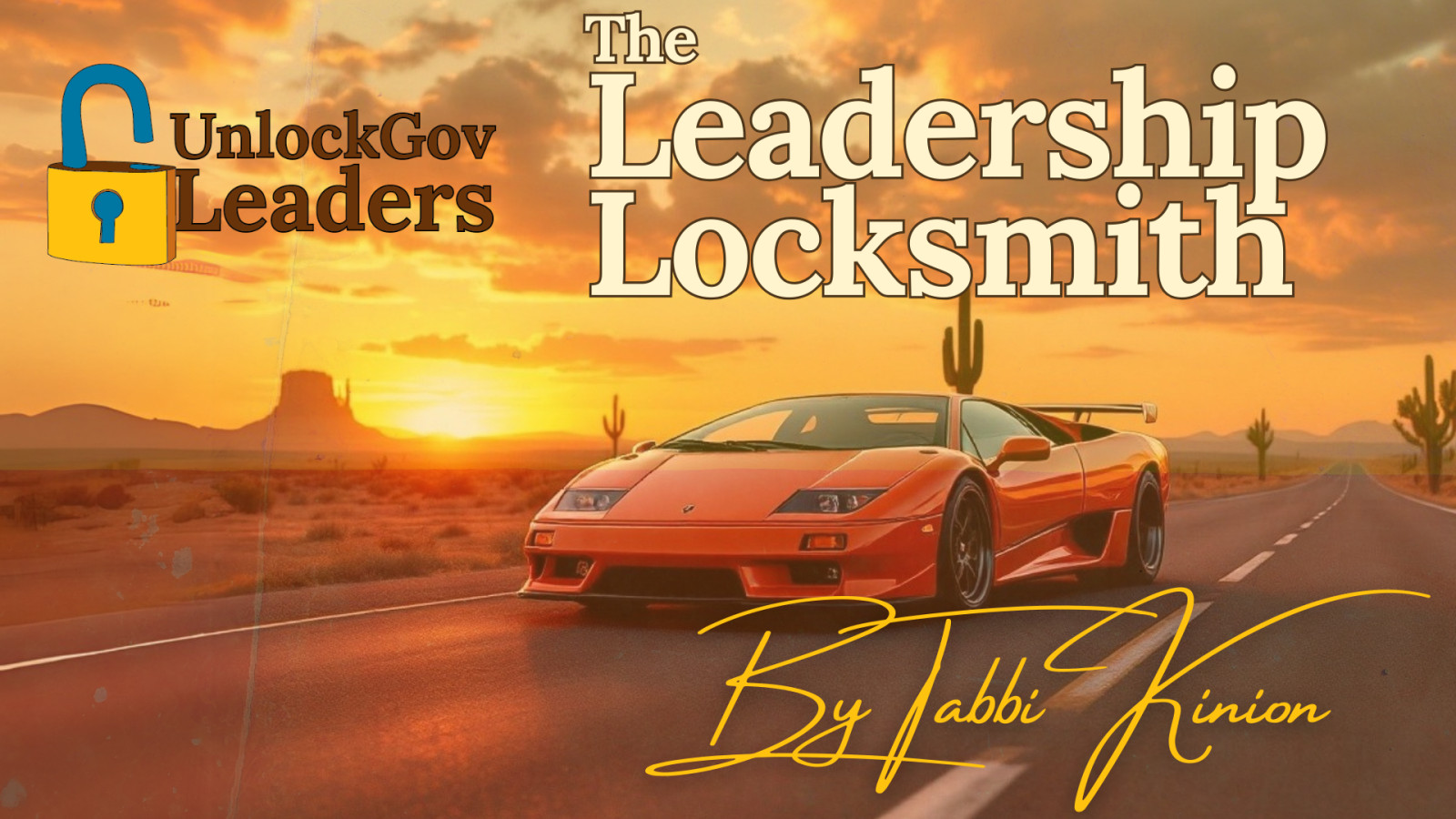
Look, my automotive expertise extends to scheduling dealership appointments and having excellent taste in car colors (red, obviously). Custom car restoration? That's about as familiar to me as quantum physics.
Which is why it's surprising that I just binged an entire Netflix series about rebuilding classic cars.
Have you watched Tex Mex Motors on Netflix yet?
In these dark, cold months, I often dive into reality TV (my favorites are the ones about cults - what can I say, I'm fascinated by group dynamics and strong leaders!). But this car restoration show caught me by surprise - not because of the stunning vehicles, but because it hit so close to home as a leader.
What hooked me was watching the real, raw process of strangers becoming a dream team. No screaming and yelling, no reality TV backstabbing - just talented people learning to trust each other and merge their unique superpowers. As someone who's led teams through ambitious projects, I found myself nodding along, remembering those magical moments when individual rockstars start playing in harmony.
Their mission was clear: Hit $500,000 in profit in 4 months. Now that's what I call a SMART goal! It was Specific (restore custom cars), Measurable (that big profit target), Achievable (stretched but possible), Relevant (success meant keeping their dream alive), and Time-bound (4-month deadline). But what really got me thinking was how they tackled it together.
You know what they say - "None of us is as smart as all of us." Watching this crew prove that truth hit home hard. Here were people bringing totally different skills to the table - mechanical genius, business savvy, design brilliance, sales magic - and learning to weave it all together into something extraordinary. As a leadership coach, I see teams struggle with this dance every day. When it clicks, though? Pure magic.
This brings us to this week's code word: Teamwork.
Not just any teamwork - we're talking about that magical combination that transforms a random group of individuals into an unstoppable force.
Like the Tex Mex crew, great teams need four essential elements:
🤝 Trust: The high-octane fuel that powers everything. When team members trust each other and have psychological safety, they share ideas freely, admit mistakes openly, and take smart risks together.
🎯 Clear Roles: Everyone needs to know their lane. Just like you wouldn't want three people trying to change the same tire, teams thrive when each person understands their unique contribution.
🌟 Shared Goals: Success isn't just hitting numbers - it's about everyone understanding and buying into the bigger picture. What's your team's equivalent of a completely restored 1995 Cadillac Fleetwood lowrider?
🔄 Coordinated Effort: The smoothest engines have all parts working in perfect sync. How well does your team's workflow purr?
Think about your team right now. Are they humming along like a completely restored 1997 orange Lamborghini Diablo or sputtering like a dusty old engine in need of a tune-up?
Let's pop the hood and run a quick diagnostic:
🔧 Trust Test: Do ideas flow freely, or is everyone steering clear of the tough conversations? Watch for signs like hesitation to speak up in meetings or the dreaded "parking lot conversations" after decisions are made.
🔧 Role Clarity Check: Is everyone confidently driving in their lane, or are they swerving across the center line? Clear roles mean less friction and faster progress.
🔧 Goal Alignment Gauge: If you asked each team member to describe what success looks like, would their answers match? Misaligned or misunderstood goals are like trying to drive with a flat tire.
Your Leadership Challenge:
Choose one area where your team's performance needs attention. What small adjustment - think fine-tuning, not engine replacement - could help shift them into high gear? It could be as easy as a quick update meeting to clarify roles and expectations or as difficult as sitting down with that employee who is clearly broken down on the shoulder.
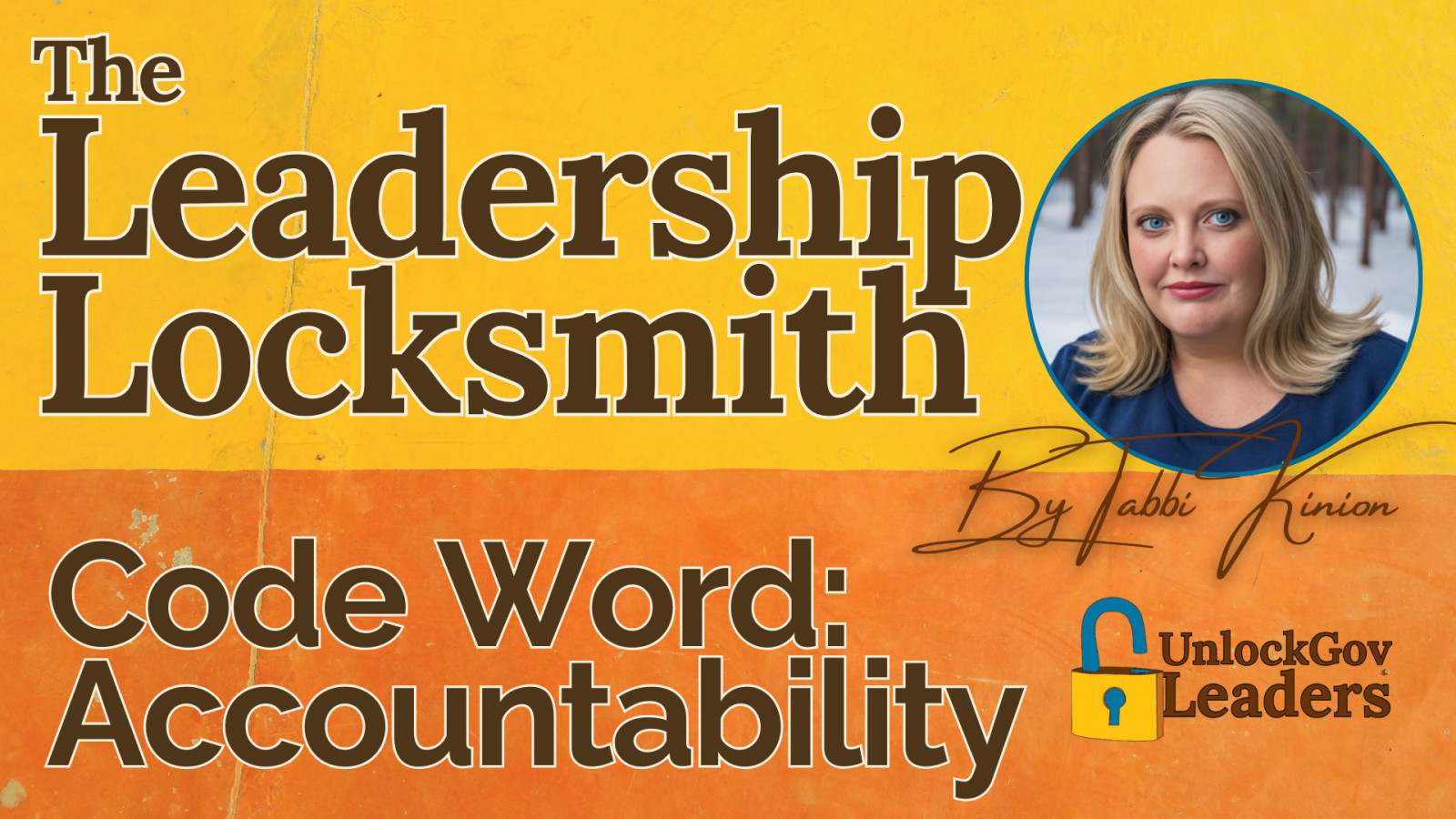
There's this magical leadership ingredient that transforms good teams into great ones. Your top performers are craving it, but most bosses get it completely wrong.
It makes all the difference...
Have you ever worked for someone who seemed completely clueless about your work - or worse, didn't seem to care whether you showed up?
Let me tell you about my tale of two bosses. As a senior manager, I had one supervisor who technically "trusted me to do my job." But I would have bet $100 he couldn't name a single project I was working on.
His predecessor? Pure gold. We collaborated, schemed, laughed, and made big moves that transformed our team. Under his leadership, I stretched toward ambitious goals, fell head-over-heels in love with my job, and practically bounced into the office each morning.
Then came the new guy. For two years straight, our only performance discussions happened during annual reviews. Despite quarterly check-ins being mandatory, he'd wave them off with a casual "We don't need to meet—you know I think you're doing an outstanding job." He assumed his hands-off approach showed trust.
What I actually heard? "Your work isn't worth 30 minutes of my time."
That's when my spark started to fade. If my boss didn't care, why should I? I went through the motions, mourning the passion I once had for that role.
Now, you might be thinking, "But he trusted you and gave you space! What's the problem?"
And that brings us to our leadership code word of the week:
ACCOUNTABILITY
Let's reframe accountability—it's not the professional world's version of "gotcha" or micromanagement in disguise. True accountability is about creating an environment where people take ownership of their work because they know it matters. It's regular, honest conversations about progress, challenges, and wins. It's clarity about who's doing what by when and why it matters to the bigger picture.
Think of accountability as the GPS for your team's success - it helps everyone know where they're going, if they're on track, and how to course-correct when needed. And here's the plot twist: accountability isn't just about your team being accountable to you - you're equally accountable to them.
Proper accountability transforms average teams into high-performing powerhouses. It's the difference between rowing in circles and winning the race.
Here's something that might surprise you: Your top performers actually crave accountability. They want those conversations about their accomplishments and challenges. They want to know their work matters enough for you to pay attention and care about the outcome.
Why?
Because when you hold your team members accountable, everyone gets:
- Clarity - team members know exactly where they stand
- Fairness - the same rules apply across the board
- Trust - people know you'll follow through, so they do too
- Growth - your regular feedback fuels improvement
- Pride - you recognize and celebrate their wins
Without accountability, it's like playing basketball without keeping score—sure, people might have fun, but they won't know if they're winning! And without a score, they'll eventually get bored and move on to something more meaningful.
Ready to move from accountability angst to leadership confidence?
🚀 Take our quick assessment to see if UnlockGov Leaders is your next power move! This isn't your typical government training - it's a 28-week transformation for public sector managers who refuse to accept that burnout is "just part of the job."
In just 3 minutes, you'll discover if you're ready to:
• Lead with genuine confidence (not just look good on paper)
• Build a high-trust team (even within bureaucratic constraints)
• Actually leave work at work (yes, really!)
• Join an elite community of government leaders making waves
Until next time, I appreciate you. I believe in you. You've got this.
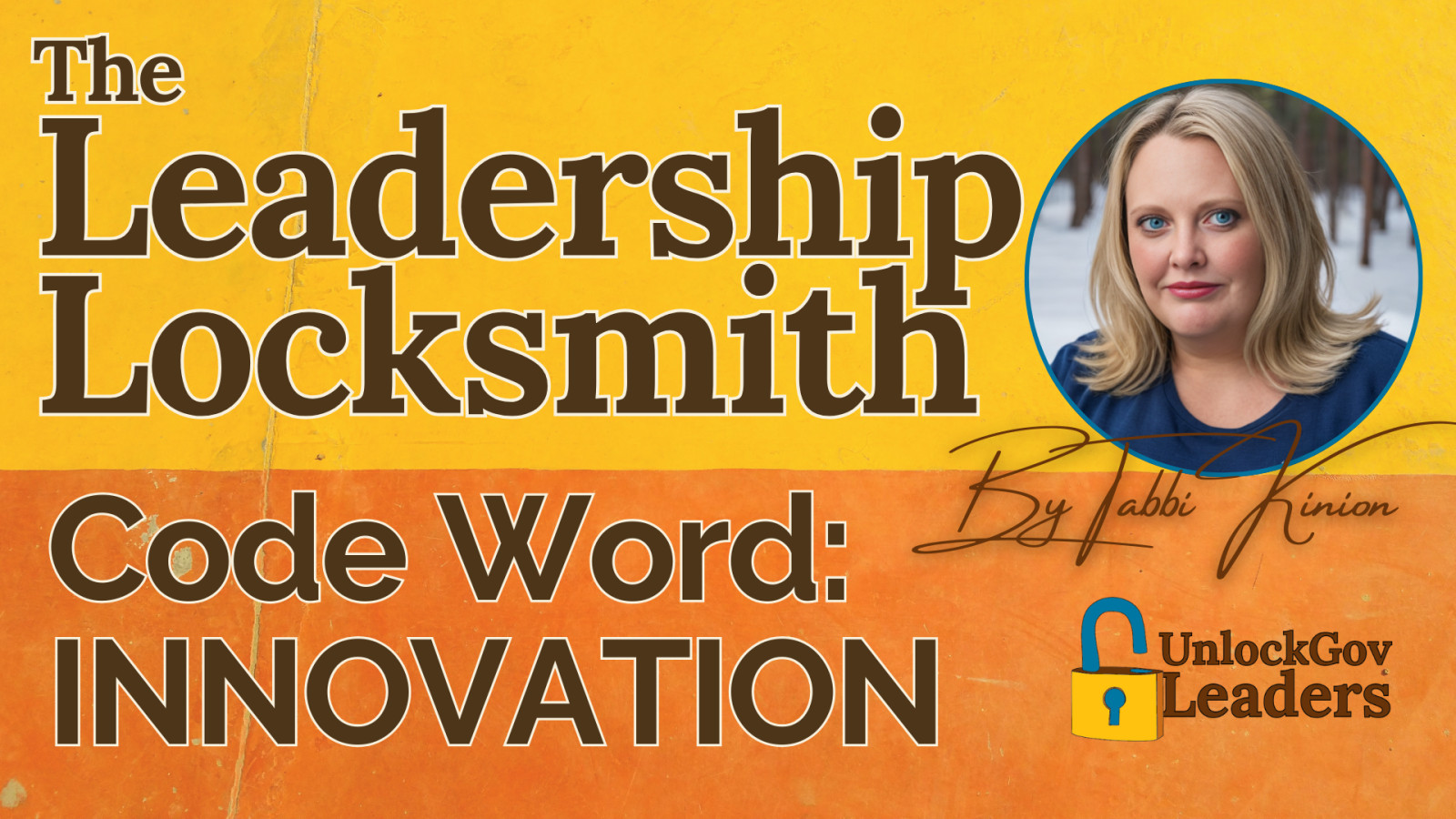
Today, we're diving into what makes your team burst with creative energy!
Years ago, on a crisp fall evening, I was sitting around a fire pit with a soon-to-be retiring colleague from the US Forest Service. I didn't work at the Forest Service - I worked at another agency, but that doesn't matter here.
Steve was sharing some of his hard-won wisdom with me as he was closing out his decades-long career. He gave me a leadership analogy I have carried into my work ever since that lovely autumn evening.
What did he tell me?
It is so simple and was such an A-Ha moment.
He told me that the real job of a leader is to roll rocks out of the trail so your team can get things done.
So simple and so true.
Great leaders ensure that people have the support, resources, and runway (err—open trail) they need to do their jobs.
And doing this for your team leads me to our leadership code word for this week:
INNOVATION
Here's the truth: The best innovative leaders aren't necessarily the ones with all the bright ideas - they're the ones who create an environment where great ideas can flourish. They're masters at making it safe for their teams to think differently, dream bigger, and, yes, occasionally fail spectacularly.
When you lead as an innovation catalyst, you're not just giving permission to think differently - you're actively inviting disruption to the "we've always done it this way" symphony.
You're the conductor who turns the mundane melody of bureaucracy into a jazz improvisation of possibilities.
Fun fact: Studies show that teams who feel psychologically safe to suggest new ideas are 76% more likely to generate innovative solutions. That's right - your leadership style literally unlocks your team's creative potential!
Put Innovation in Front:
Try this "Yes, And" challenge this week: When team members bring ideas, respond with "Yes, and..." instead of "Yes, but..."
Watch how this tiny shift transforms your team's willingness to share creative solutions.In a world of permission-seekers, be the permission-granter.
Your team's next breakthrough idea is waiting for you to create space for it. Your leadership is the key that unlocks your team's innovative potential, and that ripple effect is changing your corner of the public sector.
